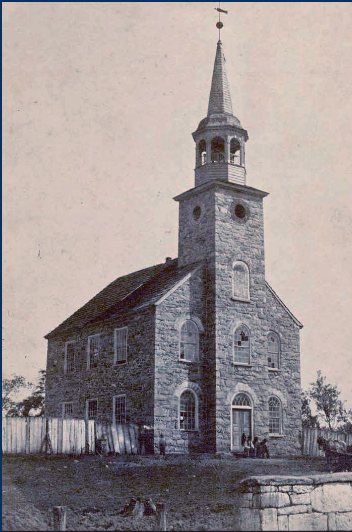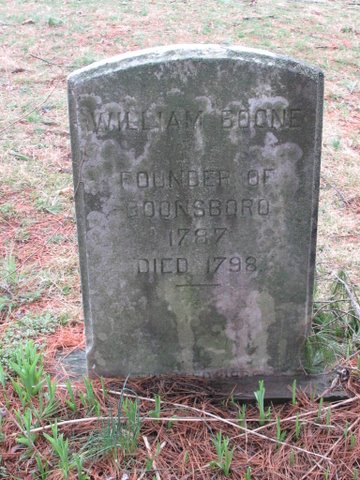William Boone, Founder
William Boone is the founder of what is today, Boonsboro, along with his brother George. His family gravesite is located to the rear of the Trinity Reformed United Church of Christ at 33 Potomac Street in Boonsboro.
George Boone III emigrated from England in 1717 with his wife and 6 children and settled in Berks County, Pennsylvania. His great grandson, William, became one of the cofounders of Boonsboro. Interestingly, William’s grandfather, George, was an uncle to Daniel Boone, the well-known frontiersman and his mother, Sara Lincoln Boone, was the sister of John Lincoln, the great-grandfather of Abraham Lincoln. Several Boone families had settled in western Maryland as early as 1767. Samuel Boone, William’s second cousin, manufactured gunlocks near Fredericktown for the Continental Army during the Revolutionary War.
William and his brother, George, obtained land in this area in 1774 while they were residing in Berks County, Pennsylvania. William moved to Maryland from Pennsylvania in 1776 and married Susanna Parks around 1778. He made his living with her and their six children as a farmer on a 100-acre tract of land in present day Boonsboro. In 1791, William acquired Fellowship, an adjacent 140-acre tract from Valentine Nicodemus. This property lay at the intersection of the wagon road connecting Fredericktown and Hagerstown and a secondary road branching off to Sharpsburg. Because of this prime location, William and his brother George envisioned establishing a town. A year later, in 1792, the brothers laid out 44 half-acre lots, 22 on each side of the main wagon road (now Alt. 40), with the town square at the intersection with the road to Sharpsburg (now MD 34). The new town was called Boone’s Berry and late changed to Margaretsville in honor of George’s wife. By 1808 it was known as Boonesborough and was eventually shortened to Boonsboro.
Boonsboro did not grow very rapidly until after William’s death in 1798. In 1803, 11 years after Boonsboro was established, there were only 24 houses, but by 1830, the population had grown to 707. This was mainly due to the construction of the Bank Road, later known as the National Road, which connected Baltimore to points west. Many of the early residents of Boonsboro were merchants and land speculators.
The Boone farmhouse stood behind today’s Trinity Reformed United Church of Christ and, on his death, William was buried on his property. Four years later in 1802, when the planning and construction of the Salem Church (also known as the Old Stone Church) began on land acquired from the William Boone family, the Old Salem Graveyard was established. William and Susanna’s graves are located in the northwest corner of the cemetery at the rear of Trinity United Church of Christ. Her headstone reads, “Susanna Boone, Proprietress of Boonesboro.”
Today, the graves are maintained by the Boonsboro Cemetery Association, whose board of directors is jointly run by Trinity Lutheran Church and Trinity Reformed Church.

Above: Old Salem Church, which housed the congregations of Trinity Lutheran and Trinity Reformed

